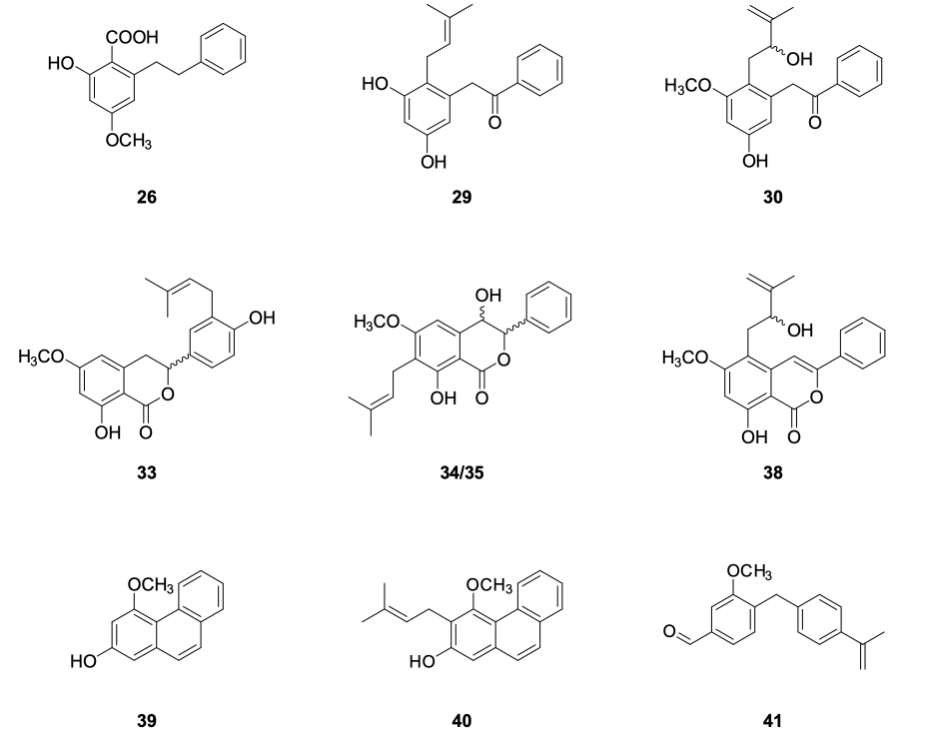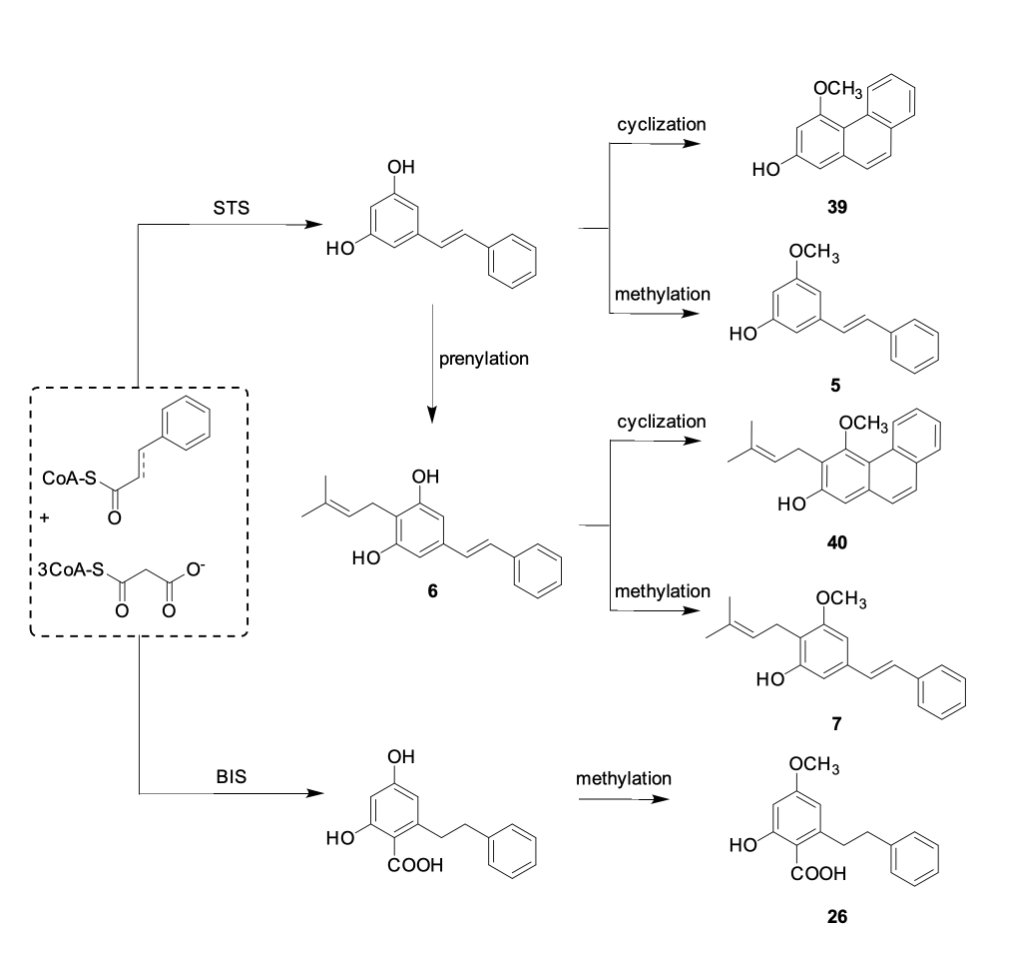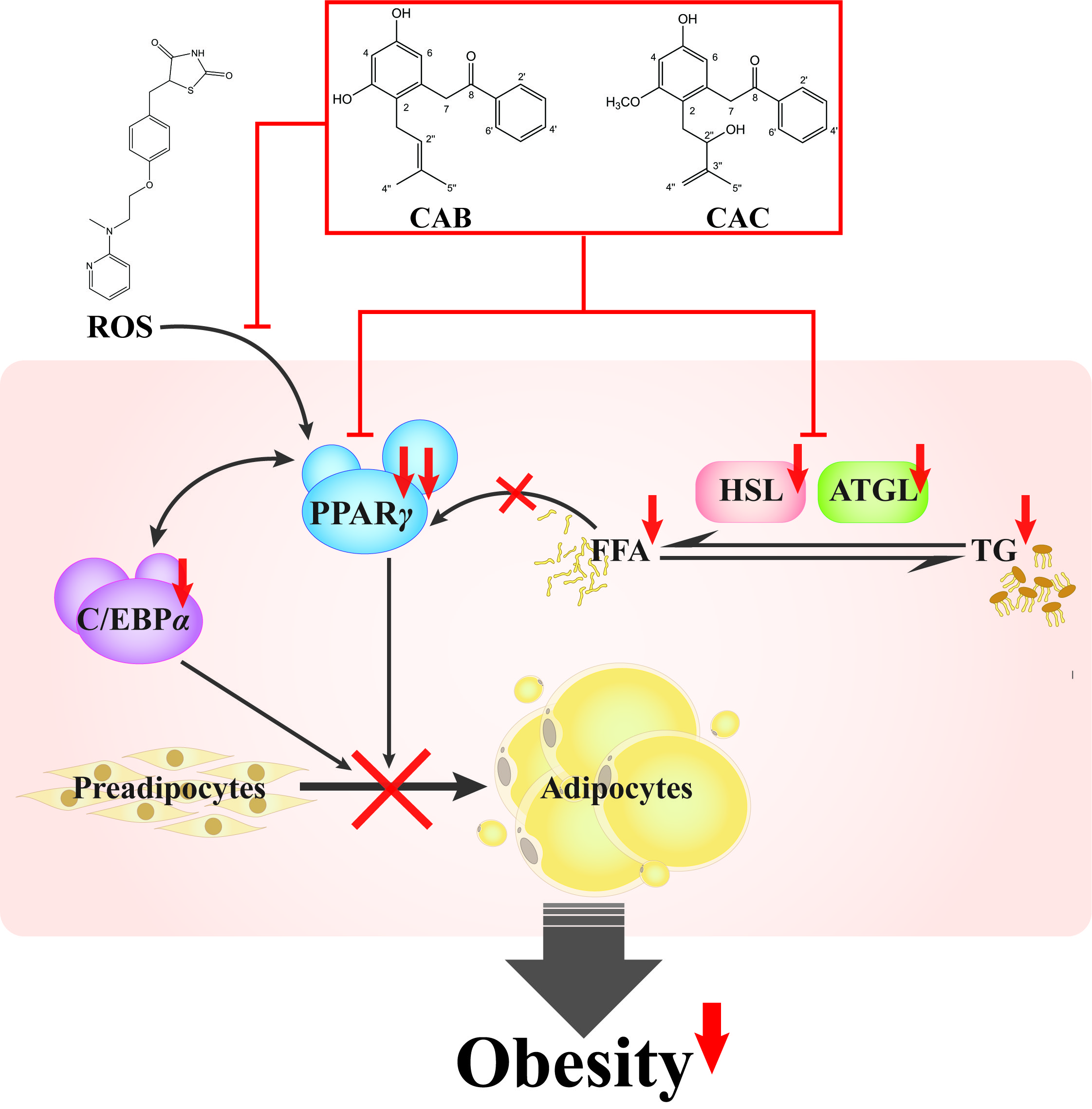New progress in the research of chemical constituents and bioactivities of Cajanus cajan
Recently, the chemical biology of natural products research group of South China Botanical Garden has made new progress in investigating chemical constituents and functional evaluation in active ingredients of the resource plant Cajanus cajan. 10 new structural compounds were isolated from the ethanol extract of Cajanus cajan leaves, including 2 rare plant-derived phenanthrenes denominated Cajananthrenes A and B, together with some new stilbenes, which could be of great significance by providing more viewpoints on the biogenesis pathway of chemical constituents and secondary metabolite in Cajanus cajan, and further enriched the structural diversity of natural products in the plant kingdom.
The bioassays demonstrated that Cajanantharenes A and B exhibited inhibitory effect on NO production in LPS-stimulated RAW 264.7 macrophages, suggesting that these compounds or extracts containing them could display anti-inflammatory activity. Moreover, new stilbenes Cajanotone B and C significantly inhibited the adipose differentiation of 3T3-L1 preadipocytes, which was achieved by regulating the gene expression level of adipogenesis-related factors. Both compounds not only significantly inhibited the adipogenesis in 3T3-L1 adipocytes by reducing the lipid accumulation, triglyceride content and FFA secretion, but also substantially inhibited the mRNA expression of HSL, ATGL, C/EBPα and PPARγ.
Notably, the effect of ROS on promoting adipogenesis could be eliminated by Cajanotone B and C. Rosiglitazone (ROS), a well-known hypoglycemic drug widely used in clinic, has an excellent hypoglycemic effect. However, the detrimental side-effects such as fat accumulation and edema of ROS, related to the mechanism of its activation on PPARγ, could not be solved by structural optimization and product upgrading. It was confirmed by current research that Cajanotone B and C inhibit adipogenesis in 3T3-L1 adipocytes through down-regulation of PPARγ, which could serve as new lead compounds with the potential to speed up the development of novel lipid-lowering and weight-control therapies. These compounds have been protected by invention patents.
Three papers have been published on this study (https://doi.org/10.1080/14786419.2023.2297862; https://doi.org/10.1039/d3ra08149d; https://doi.org/10.1016/j.bioorg.2024.107851), with the doctoral candidate Liyuan Yao as the first author and the professor Shengxiang Qiu being the corresponding author.

Fig.1. New structural compounds discovered from leaves of Cajanus cajan

Fig.2. Possible biogenetic pathway of new compounds in Cajanus cajan

Fig.3. Proposed mechanism on anti-adipogenic effects of Cajanotone B and C
File Download: